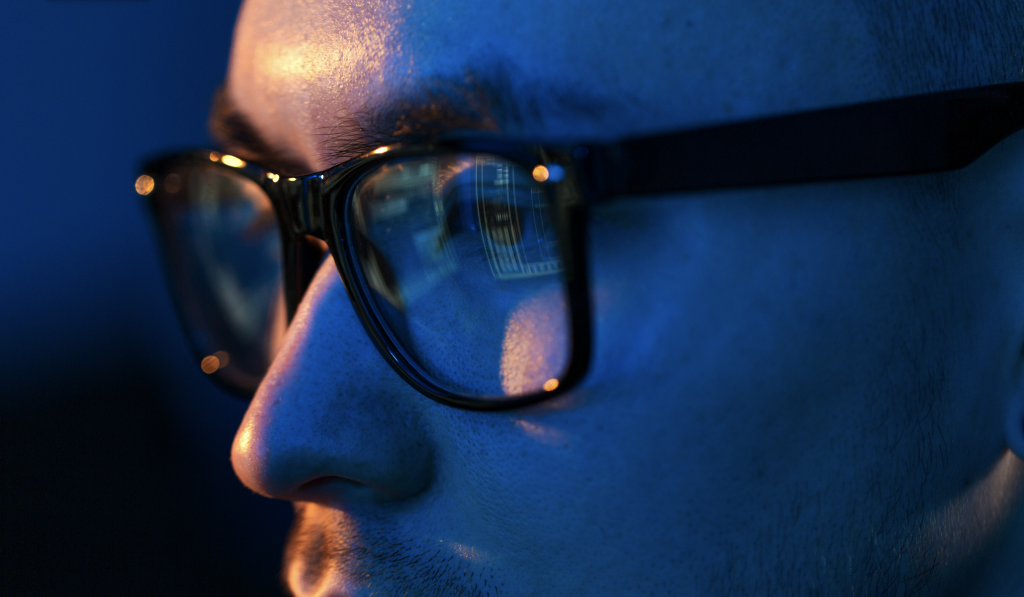

Overexposure to blue light can harm your eyes. Learn about the most common sources of blue light, and how to mitigate the risks to your vision.
Blue light has both natural and artificial sources. While blue light has its benefits, it also presents health risks—particularly to your vision. Prevent Blindness, the nation’s oldest volunteer eye health and safety organization, explains what blue light is, how it affects you, and what you can do to reduce the risk of eye damage.*
Blue light is part of the light spectrum. All the colors of the spectrum (red, orange, yellow, green, blue, indigo, and violet) are perceived as wavelengths, and they contain different amounts of energy. Blue light rays contain more energy than those closer to the red end of the spectrum.
All colors contained in light have benefits.
Some benefits of blue light include:
Moreover, there is evidence that too little blue light may contribute to nearsightedness.
Sunlight is the main blue light source.
Other sources include:
Most visible blue light passes through the cornea and lens of the eye to the retina.
Some studies suggest that too much exposure to blue light may:
Evidence also indicates that children’s eyes may absorb more blue light than adults’ eyes.
Prevent Blindness recommends several steps you can take to protect your eyes from too much blue light.

In addition to too much blue light, overexposure to the sun’s ultraviolet rays can damage your eyes, as well. Studies suggest that too much UV light can increase your risk of cataracts, eye tumors, and cancer.
*Prevent Blindness. (n.d.) Blue Light and Your Eyes. https://preventblindness.org/blue-light-and-your-eyes/
Source: {{articlecontent.article.sourceName}}
Receive daily updated expert-reviewed article summaries. Everything you need to know from discoveries, treatments, and living tips!
Already a Responsum member?
Available for Apple iOS and Android
Add Comments
Cancel